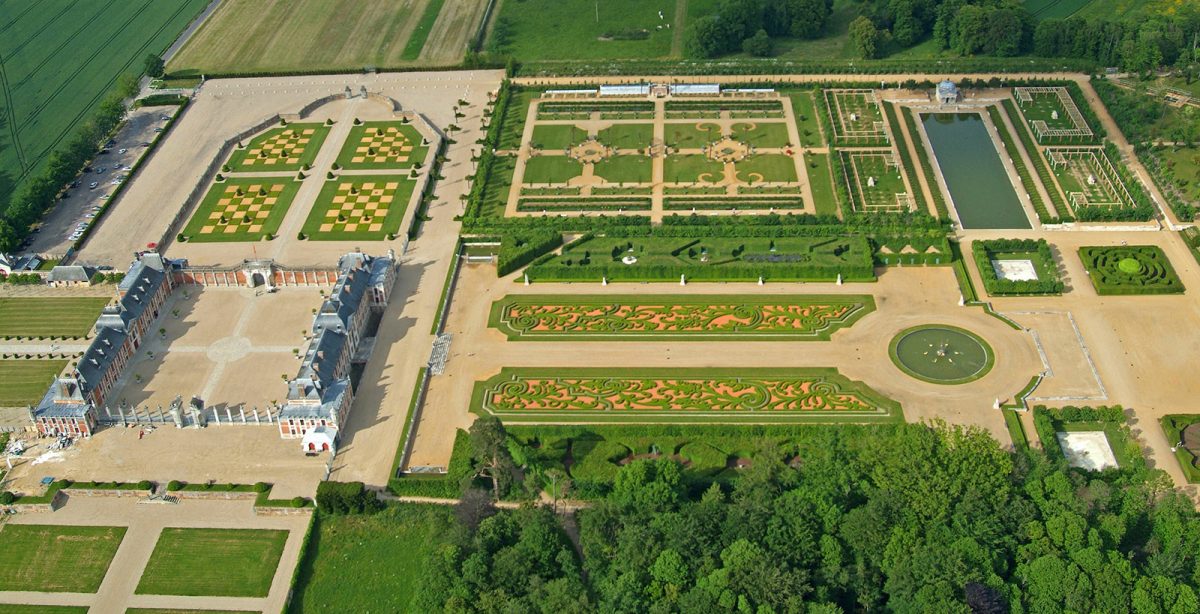Updated on 1 April 2021
Reading time: 3 minutes
A battlefield? Well, yes, once, a long time ago; in the year 935. You won’t find much trace of it today! It was the battle that asserted the Viking warlord William Longsword’s predominance in the expanded lands conferred to his father Rollo a generation earlier, i.e. Normandy. No, you’ve come to see a wonderful Ancien Régime chateau…
The Château du Champ de Bataille was built between 1653 and 1665 by Alexandre de Créquy Berneuille, a mouthful of a name who’d got a mouthful from Louis XIV’s first minister Cardinal Mazarin. De Créquy had got mixed up in an aristocratic revolt against the Boss, then of tender years, in Versailles. De Créquy found himself arrested and exiled to the provinces, but he did not allow himself to get in the least bit depressed and spent a fortune on an immense chateau with extravagant apartments, sumptuous stables; and vast formal gardens in the Le Nôtre style of Versailles. Home from home, really. Left unfinished at his death, De Créquy’s heir sold it to a rich noble family nearby, the Harcourts, who pushed on with the works until the French Revolution spoilt everything: the chateau was stormed, pillaged and the furniture sold off. Falling into decay it was eventually purchased by one of France’s most famous contemporary designers, Jacques Garcia, who revived both the chateau and the vast grounds to their present regal glory.

Don’t miss
The majestic chateau: The numerous spectacular rooms inside the Château du Champ de Bataille that are open to the general public are packed with antique treasures and curiosities amassed by Jacques Garcia on his travels.
The gardens: French writer Jean de la Varende once wrote about the Château du Champ de Bataille: ‘Here reigns opulence; the decor is secondary to the declaration of power.’ This is the idea Jacques Garcia had in mind when he recreated, from nothing, the once beautiful but then defunct gardens of the Château du Champ de Bataille. Refusing the idea of an anachronistic reconstruction of French gardens in the Great Century fashion, Jacques Garcia decided on a contemporary approach, drawing his inspiration from antique sources. ‘The inspiration of the moment expressed in eternal forms,’ this was the guiding principle behind a resolutely contemporary garden brought to life within a classical structure.
Open-air opera: Every summer, the Château du Champ de Bataille welcomes a fantastic open-air opera!

Nearby
- Le Neubourg and its museum
- Le Bec-Hellouin, officially recognised as one of the ‘most beautiful villages in France’
- Château d’Harcourt and its arboretum
- The romantic Moulin Amour (Ecomusée de la Meunerie)
- Evreux and its majestic cathedral
USEFUL INFORMATION
Château du Champ de Bataille
8 route du château, 27110 Sainte-Opportune-du-Bosc
chateauduchampdebataille.com
